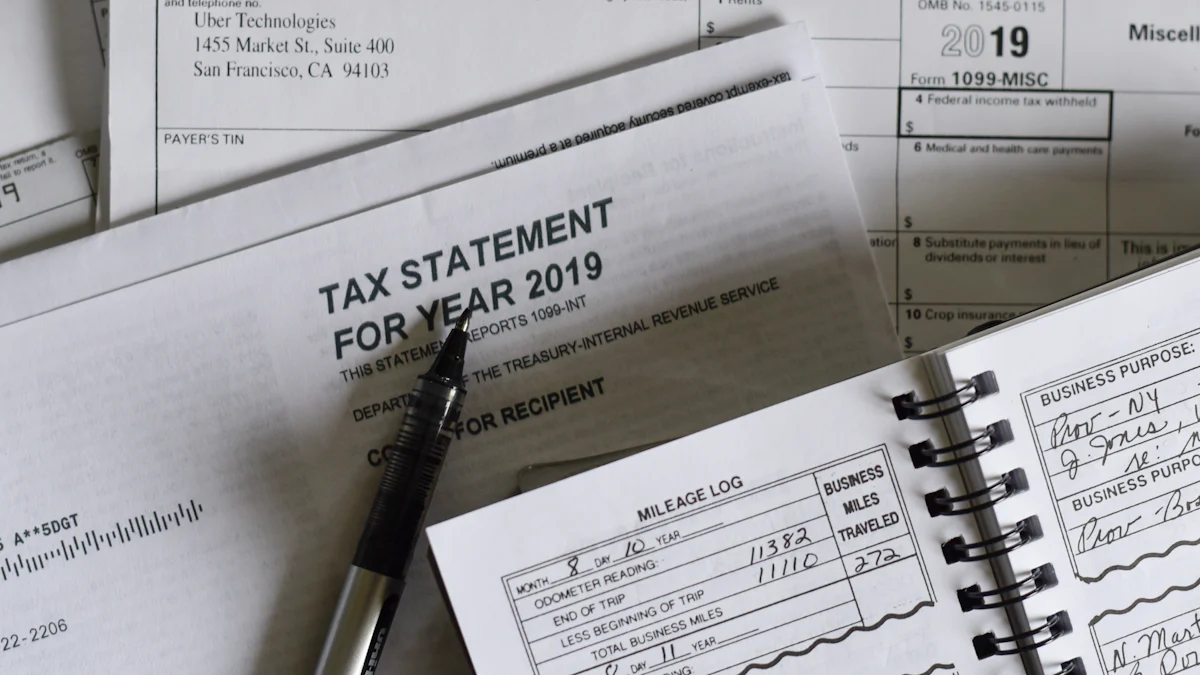The Ultimate Guide to IRS Offer in Compromise: Your Path to Tax Relief

Understanding the IRS Offer in Compromise Program
What is an Offer in Compromise?
Definition and Purpose
An Offer in Compromise (OIC) is a program administered by the Internal Revenue Service (IRS) that allows eligible taxpayers to settle their tax debt for less than the full amount owed. The primary purpose of this program is to provide a fresh start to financially distressed taxpayers by offering them a realistic solution for paying off their tax liabilities.
How It Works: A Brief Overview
The OIC process involves a thorough review of the taxpayer's financial situation, including income, expenses, assets, and overall ability to pay. Upon submission of an OIC application, the IRS evaluates the taxpayer's unique circumstances and determines whether accepting a reduced amount would be more beneficial than pursuing full payment. If approved, the taxpayer can resolve their tax debt through a lump sum payment or structured periodic payments.
Benefits of the Offer in Compromise Program
Tax Relief Opportunities
One of the key benefits of participating in the Offer in Compromise program is the opportunity for substantial tax relief. Eligible taxpayers can potentially settle their tax obligations for significantly less than what they owe, providing them with a feasible path towards resolving their financial burdens.
Case Studies: Success Stories
Numerous success stories exist where individuals and businesses have successfully utilized the OIC program to alleviate their tax liabilities. These case studies serve as real-life examples of how taxpayers have achieved financial freedom and peace of mind through the Offer in Compromise program.
Eligibility and Pre-Qualification for an Offer in Compromise
When considering an Offer in Compromise (OIC) as a potential solution for tax relief, it is crucial to understand the eligibility requirements and the pre-qualification process. The IRS has specific criteria that taxpayers must meet to qualify for the program, as well as a preliminary assessment tool to help determine eligibility.
Determining Your Eligibility
Key Criteria for Consideration
To be eligible for an Offer in Compromise, taxpayers must demonstrate genuine financial hardship or exceptional circumstances that prevent them from paying their full tax debt. The IRS evaluates various factors, including income, expenses, asset equity, and overall ability to pay. Additionally, individuals who are in an open bankruptcy proceeding are generally not eligible for the OIC program.
Common Disqualifiers
Certain factors can disqualify taxpayers from participating in the Offer in Compromise program. For instance, individuals who are currently filing for bankruptcy under Chapter 13 or have not filed all required tax returns may not be eligible. Moreover, those who have not made estimated tax payments or have pending employment tax liabilities are typically disqualified from OIC consideration.
The Pre-Qualification Process
Using the IRS Pre-Qualifier Tool
Before initiating the formal application process, taxpayers can utilize the IRS Offer in Compromise Pre-Qualifier Tool available on the official IRS website. This online tool assists individuals in determining whether they may be eligible to make an offer based on their financial information and unique circumstances. By providing essential financial details, such as income, expenses, and outstanding debts, taxpayers can gain valuable insights into their potential eligibility for the OIC program.
Gathering Necessary Documentation
In preparation for applying for an Offer in Compromise, it is essential to gather all necessary documentation to support your financial situation. This includes detailed records of income sources, living expenses, asset valuations, and any outstanding liabilities. Ensuring that all required documentation is organized and readily available streamlines the application process and facilitates a comprehensive review by the IRS.
By understanding the key eligibility criteria and engaging in the pre-qualification process with thorough documentation at hand, taxpayers can effectively assess their suitability for pursuing an Offer in Compromise as a viable option for resolving their tax debt.
Now let's move on to detailing how to secure an IRS Offer In Compromise for tax relief.
Ultimate Guide - Securing An IRS Offer In Compromise For Tax Relief
Once a taxpayer has determined their eligibility and pre-qualified for the Offer in Compromise (OIC) program, they can proceed with the step-by-step application process. This involves completing the necessary forms and providing a convincing statement to support their offer.
Step-by-Step Application Process
Completing the IRS Form 656 Booklet
The first crucial step in securing an IRS Offer in Compromise is to complete the IRS Form 656 Booklet, which is the official application for individuals seeking to settle their tax debt through this program. The booklet includes detailed instructions on how to accurately fill out the required forms, including financial statements and supporting documentation. It is essential to provide comprehensive and accurate information to ensure a thorough review by the IRS.
Writing a Convincing Statement
In addition to completing the necessary forms, applicants must submit a convincing statement explaining their unique circumstances and why they believe their tax debt should be settled for less than the full amount owed. This statement should clearly outline any financial hardships, unexpected life events, or other compelling reasons that justify the request for an Offer in Compromise. Providing specific details and supporting documentation can significantly strengthen the applicant's case.
Financial Analysis for Your Offer
Understanding Your Financial Information
Before submitting an offer, it is crucial for taxpayers to have a clear understanding of their financial information. This includes a comprehensive overview of income sources, living expenses, asset valuations, outstanding debts, and any other relevant financial details. By gaining a thorough understanding of their financial situation, applicants can accurately assess their ability to pay and determine an appropriate offer amount.
Calculating an Acceptable Offer
When preparing an offer, taxpayers need to calculate an acceptable amount based on their financial analysis. The IRS uses specific formulas and guidelines to evaluate offers, taking into account factors such as income potential, asset equity, and reasonable living expenses. Calculating an acceptable offer requires careful consideration of these factors to ensure that the proposed amount aligns with the taxpayer's true ability to pay.
By following these steps and engaging in a meticulous application process that includes completing required forms, providing a compelling statement, understanding one's financial information, and calculating an acceptable offer amount based on IRS guidelines ensures that applicants are well-prepared when seeking tax relief through an Offer in Compromise.
After Submission: What Happens Next?
Once the taxpayer has submitted their Offer in Compromise (OIC) application to the IRS, the next phase involves a comprehensive review process by the IRS. This stage is crucial as it determines the outcome of the taxpayer's request for tax relief.
The IRS Review Process
Timeline and Expectations
Upon submission, the IRS initiates a thorough review of the OIC application. The timeline for this review process can vary based on the complexity of the case and current caseloads at the IRS. Taxpayers should anticipate that the review may take several months before a decision is reached. It is essential to remain patient and allow sufficient time for the IRS to carefully evaluate all aspects of the application.
Possible Outcomes
During the review process, there are several possible outcomes that taxpayers should be prepared for. The IRS may accept the offer as submitted, reject it, or propose a counteroffer based on their assessment of the taxpayer's financial situation. Understanding these potential outcomes helps taxpayers manage their expectations and plan accordingly.
If Your Offer is Accepted
Meeting the Terms of Your Agreement
If the IRS accepts an Offer in Compromise, it is imperative for taxpayers to fully understand and adhere to all terms outlined in the agreement. This includes making any required payments promptly and complying with ongoing tax obligations. By fulfilling these terms, taxpayers can successfully resolve their tax debt and achieve lasting financial relief.
Maintaining Compliance
After an OIC is accepted, taxpayers must remain compliant with all tax-related requirements moving forward. This entails timely filing of tax returns, making estimated tax payments if applicable, and adhering to any additional conditions specified in their agreement with the IRS. Maintaining compliance ensures that taxpayers uphold their end of the agreement and continue on a positive financial trajectory.
If Your Offer is Rejected
Understanding the Reasons
In cases where an Offer in Compromise is rejected by the IRS, it is essential for taxpayers to understand the reasons behind this decision. The IRS provides clear explanations for rejection, which may include insufficient offer amount, discrepancies in financial information provided, or failure to meet eligibility requirements. Understanding these reasons enables taxpayers to address any shortcomings and consider alternative solutions.
Exploring Alternative Solutions
Following a rejection, taxpayers have various alternative solutions available to address their tax liabilities. These may include setting up an installment agreement with the IRS to pay off their debt over time or exploring other resolution options based on their individual circumstances. Seeking professional guidance or legal professionals can provide valuable insights into alternative pathways toward resolving tax obligations.
By comprehensively understanding what happens after submitting an Offer in Compromise application, including potential outcomes and post-acceptance or rejection scenarios, taxpayers can effectively navigate through this critical phase of seeking tax relief.
Conclusion: Your Path to Tax Relief
Recap of Key Points
In summary, the IRS Offer in Compromise (OIC) program offers eligible taxpayers a viable solution for settling their tax debt for less than the full amount owed. By providing a realistic path to tax relief, the OIC program considers the unique financial circumstances of taxpayers and aims to facilitate a fresh start for those facing overwhelming tax liabilities. The eligibility criteria, pre-qualification process, application steps, and post-submission outcomes collectively form a comprehensive framework for individuals seeking to alleviate their tax burdens through this program.
Key takeaways from this ultimate guide include understanding the purpose and benefits of the Offer in Compromise program, navigating the eligibility requirements and pre-qualification process, as well as securing an OIC by meticulously completing the application forms and providing compelling financial statements. Additionally, gaining insights into what happens after submission, including potential review timelines and outcomes, acceptance terms, compliance obligations, or alternative solutions is crucial for informed decision-making.
Throughout this guide, taxpayers have been equipped with essential knowledge and actionable steps to pursue an IRS Offer in Compromise for tax relief effectively. It is imperative to approach this process with careful consideration of one's financial situation and a clear understanding of the expectations associated with an OIC application.
Encouragement and Next Steps
As individuals embark on their path to tax relief through the IRS Offer in Compromise program, it is important to remain proactive and diligent in adhering to all requirements. Seeking professional guidance from tax experts or legal professionals can provide invaluable support throughout this journey. Moreover, maintaining open communication with the IRS and staying informed about any updates or requests related to the OIC application is fundamental.
Moving forward, Ultimate Guide - Securing An IRS Offer In Compromise For Tax Relief emphasizes persistence and thoroughness in each phase of the process. By staying committed to meeting all necessary criteria and engaging constructively with the IRS review process, taxpayers can position themselves optimally for achieving lasting tax relief through an Offer in Compromise.
Contact your Tax Resolution Attorney
Secure your financial peace of mind today. For more information, please visit https://taxresolution.esq.
Attorney Orlando R. Dizon | Tax Resolution, Esq | Houston Tax Resolution Attorneys
See Also
Easing Taxpayer Struggles: A Step-by-Step Manual for IRS Offer In Compromise
Navigating the IRS Offer In Compromise: A Stepwise Handbook for Taxpayers
Conquering the IRS Offer In Compromise Procedure: A Step-by-Step Manual
Unraveling The IRS Offer In Compromise Process: A Step-by-Step Handbook
Subscribe to get the updates!
Sign up now to receive timely blog updates.
I accept the email subscription terms.

